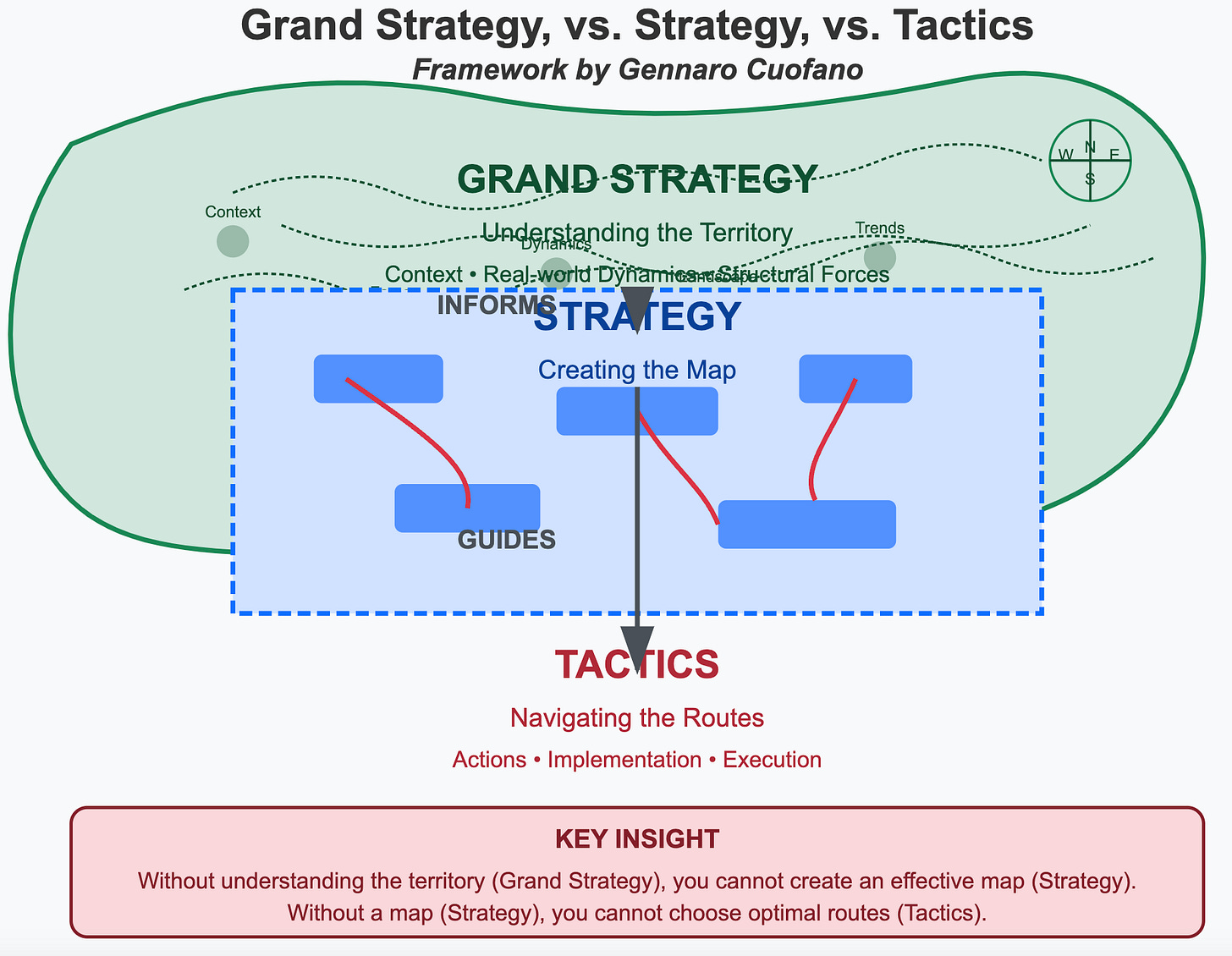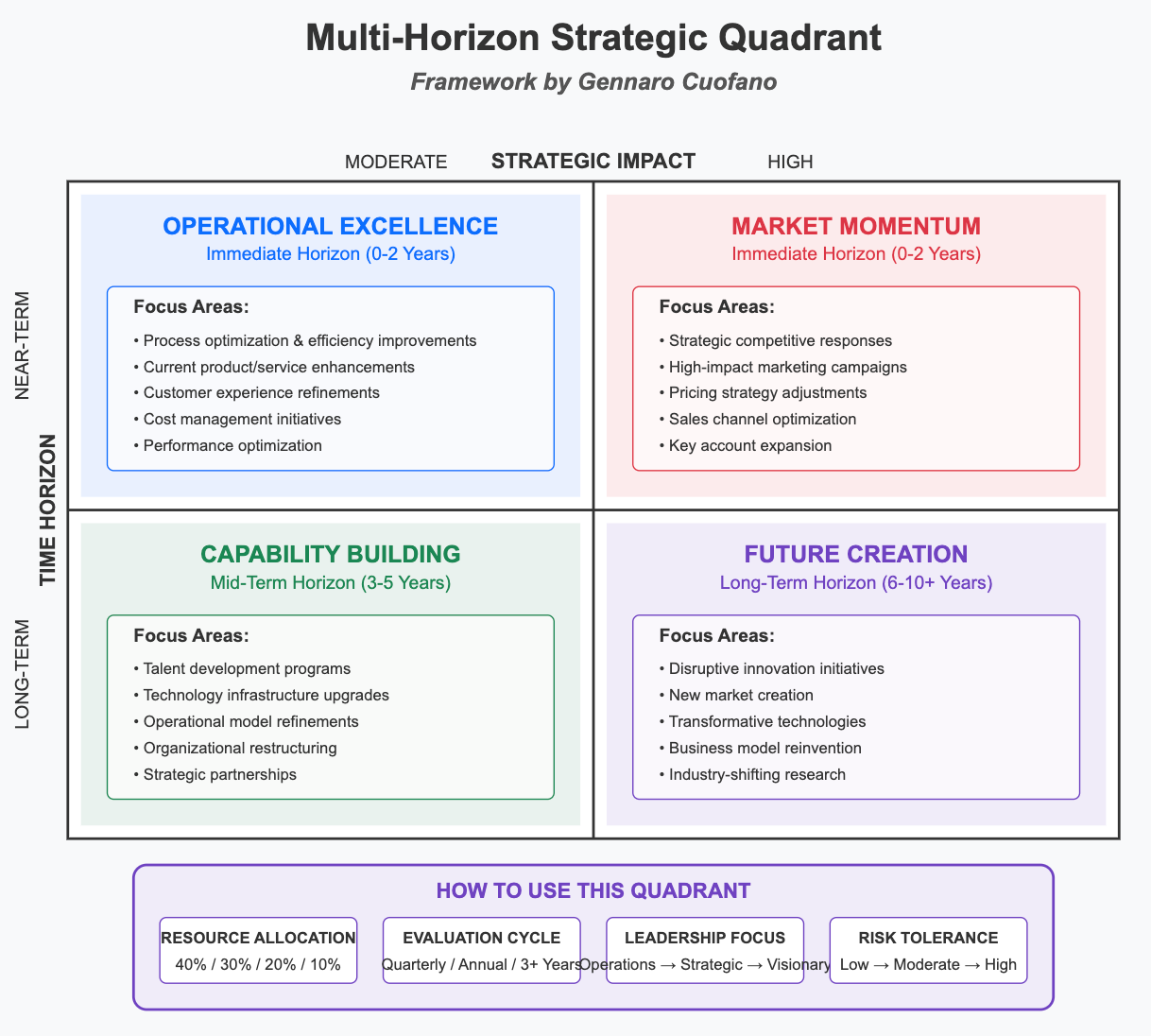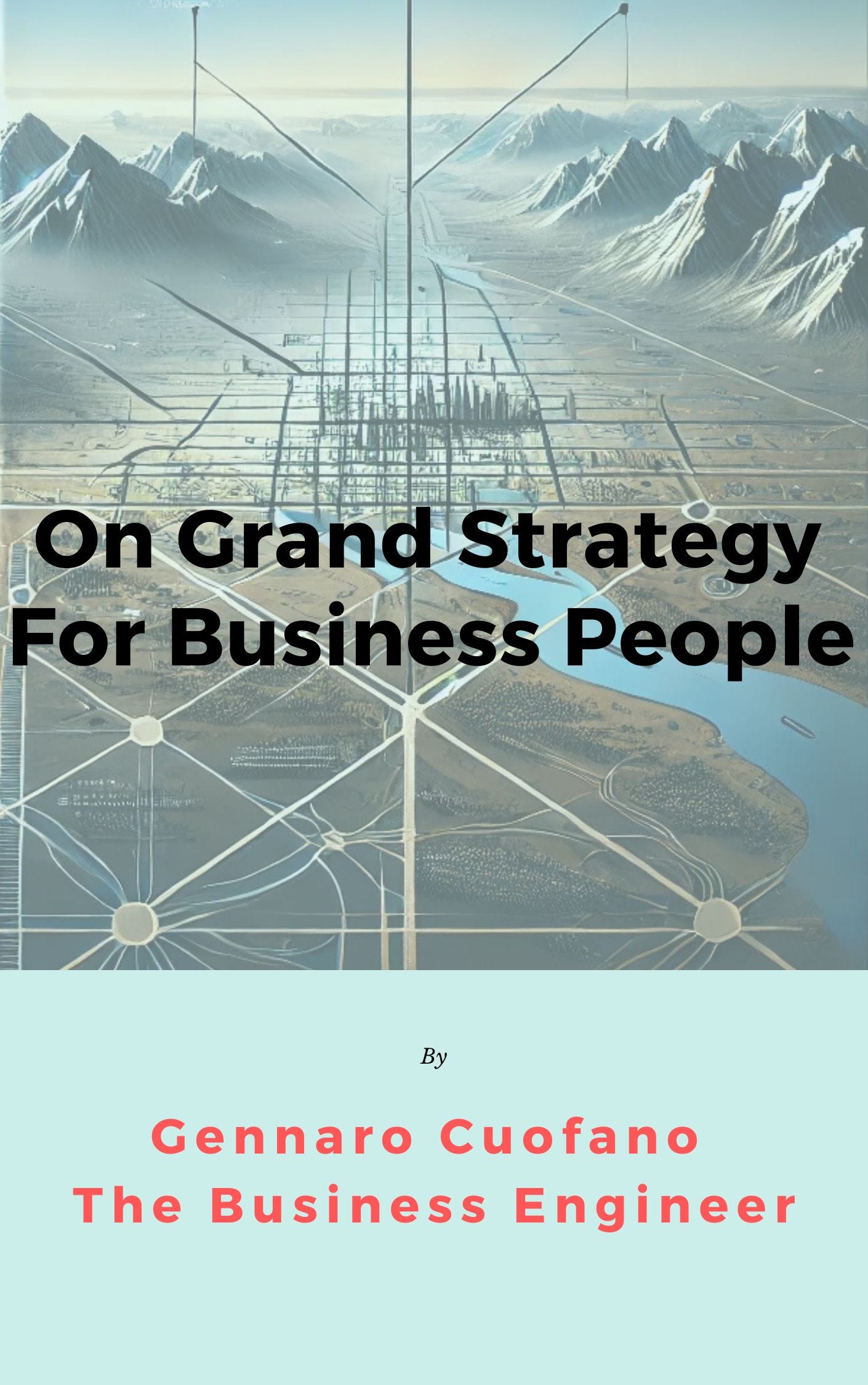Contextual Mapping Framework
As I explained in Grand Strategy, mapping out the territory is the first step in framing the context in which you operate.
From there, you build a map and then a set of tactics you can leverage.
That’s the best mental model to grasp the difference between grand strategy, strategy, and tactics:
Grand Strategy = Territory (Structural/Contextual)
Strategy = Map (Navigational/Directional)
Tactic = Routes (Operational/Executional/Optional)
From there, within the grand strategy framing, we have three core components:
One is the broader context that comes from external forces and internal capabilities, which I’ve defined as contextual adaptability.
From there, we need to define the horizon ahead in terms of a timeline within the boundaries of time horizon analysis.
To me, a critical component of it is having a multi-horizon strategy, which helps balance the short and long term.
Only from there can we get a final contextual map of the whole to have a clearer view of the grand strategy.
The main goal will be to define the core focus based on the territory's stability and the potential impact of that strategy on the company within that territory.
From there, assess where key uncertainties are, where a contingency plan is needed, and where we need only to monitor the context around it as it develops.








